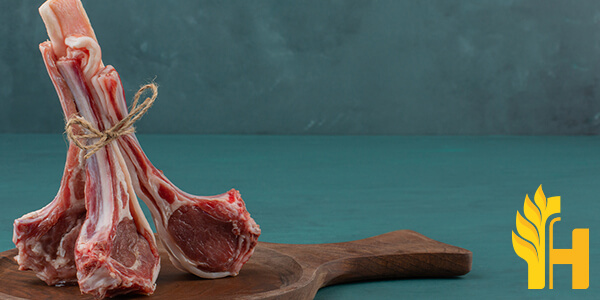Milk Lamb price

Where to buy and sell Milk Lamb, lowest (cheapest) and highest price.
check offers buy sell Milk LambToday price for Milk LambMilk Lamb
The Designation of Origin "Lechazo de Castilla y León" is the name given to young lambs that are still under their mother's milk, one or two days old. They must be born and bred in certain areas of Castile and Leon. Milk feeding gives this product its special, delicate flavor that makes it unique. The animal must be of the three autochthonous breeds recognized by law: Churra, Castellana Negra and Ojalada. Having given birth to a living lamb they are milk-fed for 52 days on average in the mountains of the provinces of Salamanca or Zamora. It is then slaughtered, prepared, and packed according to the regulations of the Designation of Origin "Lechazo de Castilla y León". They are sold in parts or whole depending on their weight which can be between 6.5 kg and 12 kg. They are marketed with an official coat of arms indicating their origin. The presentation in parts, usually in pairs or small groups is traditional. The legs are wrapped together to form a bottom part and the halves are placed around it with the neck pointing outwards. The lechazo has to be transported on special slatted crates so that the meat keeps its freshness intact until it reaches its final destination. These crates are usually covered with "serones", a kind of canvas made from esparto grass. The first seron, to protect the meat against sun and dust is placed where it can be seen, as this is the most important part of the product. It should not be wrapped or tied up but must show all its beauty for it to be appreciated at its true worth. The second seron, the one that covers the meat and protects it from dirt, is placed on top of it. Finally, straw is used to fill up any gaps and to absorb excess liquids making sure not to damage the goods. The animal must be less than 12 months old and weigh between 6.5 kg and 12 kg, corresponding to the period when they still drink their mother's milk (between 4 and 8 weeks). The I.G.P. "Lechazo de Castilla y León" is characterized by its tenderness, flavor, and nutritional qualities that make it an essential part of a healthy, balanced diet for infants, children, and adults alike.Global milk lamb production
Despite the relatively small size of the global milk-lamb industry, it is a significant contributor to the world's food supply. Milk lambs are raised in many different countries and regions, with the largest producers being New Zealand, Australia, and the United States. Together, these three countries account for over 70% of total milk-lamb production. While the raising of milk lambs has a long history, the industry has undergone significant changes in recent years. One of the most important has been the introduction of new breeds of sheep that are better suited to dairy production. This has resulted in higher yields and better overall quality of milk. Additionally, advances in husbandry and animal husbandry practices have also played a role in improving the efficiency of milk-lamb production. Looking to the future, the global milk-lamb industry is expected to continue to grow. This growth will be driven by increasing demand for dairy products around the world. Additionally, as consumer preferences change and become more health conscious, there is likely to be an increased demand for milk lamb as a source of healthy, nutritious, and affordable dairy products.Download our new
Husfarm App
Stay up to date with the current prieces of agricultural products all over the world.
Do you want to sell agricultural products?
Are you an Agricultural processor looking for high-quality products to buy?
Post an ad for FREE!
